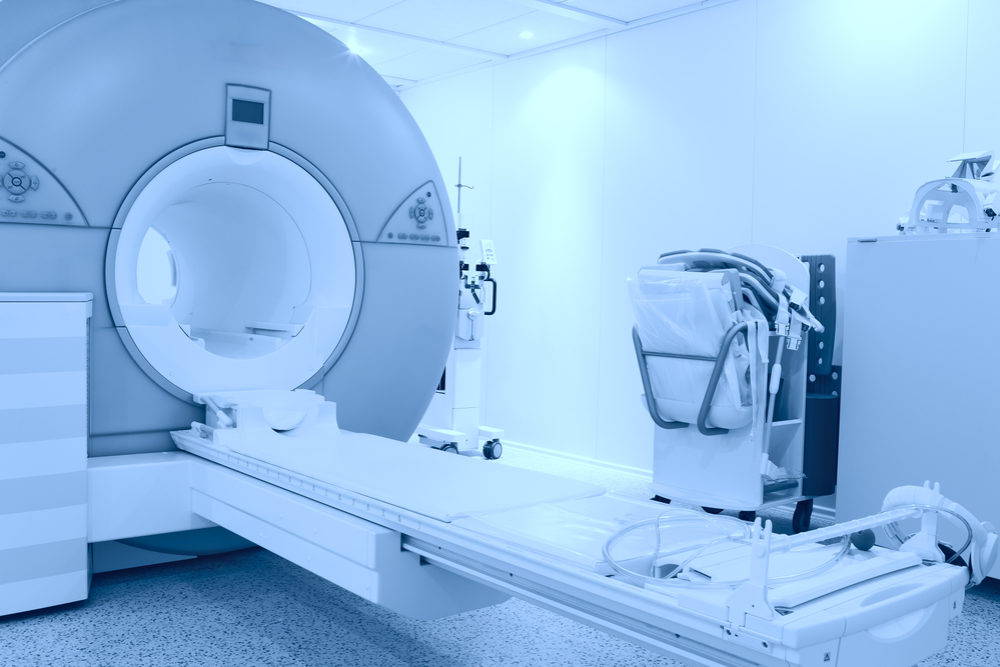Gadolinium Contrast Agents Should Carry New Label Warnings, FDA Advisory Committee Votes

A panel of scientific experts is calling for additional label warnings on gadolinium-based contrast agents (GBCA’s), which are used for magnetic resonance imaging (MRI).
On Friday, the FDA’s Medical Imaging Drugs Advisory Committee voted 13-1, with one member abstaining, to recommend that the agency require new MRI contrast agent warnings about the risk that gadolinium could build up in the brain.
Gadolinium based contrast agents are used to enhance the MRI results, allowing physicians interpreting the exam to distinguish blood vessels from nearby tissue. According to the American College of Radiology (ACR), gadolinium-based contrast agents are used on about 30 million patients annually.

Did You Know?
Change Healthcare Data Breach Impacts Millions of Customers
A massive Change Healthcare data breach exposed the names, social security numbers, medical and personal information of potentially 100 million Americans, which have now been released on the dark web. Lawsuits are being pursued to obtain financial compensation.
However, amid growing concerns and studies indicating that gadolinium builds up in the brain, the FDA issued a drug safety communication in May, saying that its own review had found no threat of adverse health effects from gadolinium build-up.
In April 2015, a study published in the medical journal Radiology examined the brains of cadavers and found that those who had received gadolinium injections had deposits in the brain, while those who had not received such injections did not.
In June 2015, a study by European researchers in the journal Investigative Radiology found similar deposits in the brains of rats injected with Omniscan, a GBCA (gadolinium-based contrast agent) made by GE Healthcare. The rats developed significant, persistent MRI abnormalities over time, and high levels of gadolinium were found deep in the rats’ brains.
In July 2015, the FDA launched a review of MRI contrast agents following a number of studies that suggested individuals injected with the chemicals may experience a buildup of gadolinium in the brain. European regulators later launched a similar review and also failed to find any harmful side effects.
In July 2016, the ACR issued new, updated guidelines, urging doctors to consider a number of factors when deciding whether gadolinium MRI contrast agents should be used, due to growing concerns about the buildup of gadolinium in the brain.
Despite the prior findings, the FDA has not to placed any restrictions on gadolinium-based contrast agents at this time.
The advisory committee vote could change that. While the committee’s recommendations are not binding, the FDA often weighs its advisory committee’s recommendations heavily in future regulations.
FDA officials had specifically asked the advisory committee to advise on the subject and to come up with strategies to minimize any potential future, as-yet-unknown, risks from gadolinium brain build up.
In response, the advisory committee called for manufacturers to conduct more thorough research to help determine what the risks are and whether there need to be restrictions placed on contrast agent use.
Gadolinium Contrast Safety Concerns
Although the MRI dyes are generally believed to be safe, several years ago concerns emerged about a link between MRI gadolinium contrast agents and a severe and life-threatening skin condition, known as nephrogenic systemic fibrosis (NSF), which was found to occur among patients with impaired kidney function, causing their skin to thicken and harden, severely restricting movement.
Sometimes referred to as gadolinium associated systemic fibrosis, NSF is a painful disorder that has no known cure and often results in confinement to a wheelchair and then death.
In 2007, the FDA limited gadolinium contrast doses in most patients and contraindicated it for others, which limited the risk of NSF. In September 2010, the FDA went even further and banned the use of Bayer’s Magnevist on patients with kidney problems, due to the heightened risk of NSF.
The agency also required label changes for all gadolinium agents, warning healthcare professionals to screen patients before injecting gadolinium to identify those suffering from acute kidney injury or chronic, severe kidney disease.
Following its more recent review, the FDA indicated that NSF should still be the adverse side effect of concern involving gadolinium-based contrast agents. The FDA is continuing to assess their safety, and its National Center for Toxicological Research is currently conducting a study on gadolinium brain retention in rats.
1 Comments






JackAugust 19, 2018 at 6:16 pm
I have Gadolinium Toxicity with numerous side effect and want to file an individual lawsuit. If you have been poison by Gadolinium Toxicity from MRI. Please feel free to email me to share information.